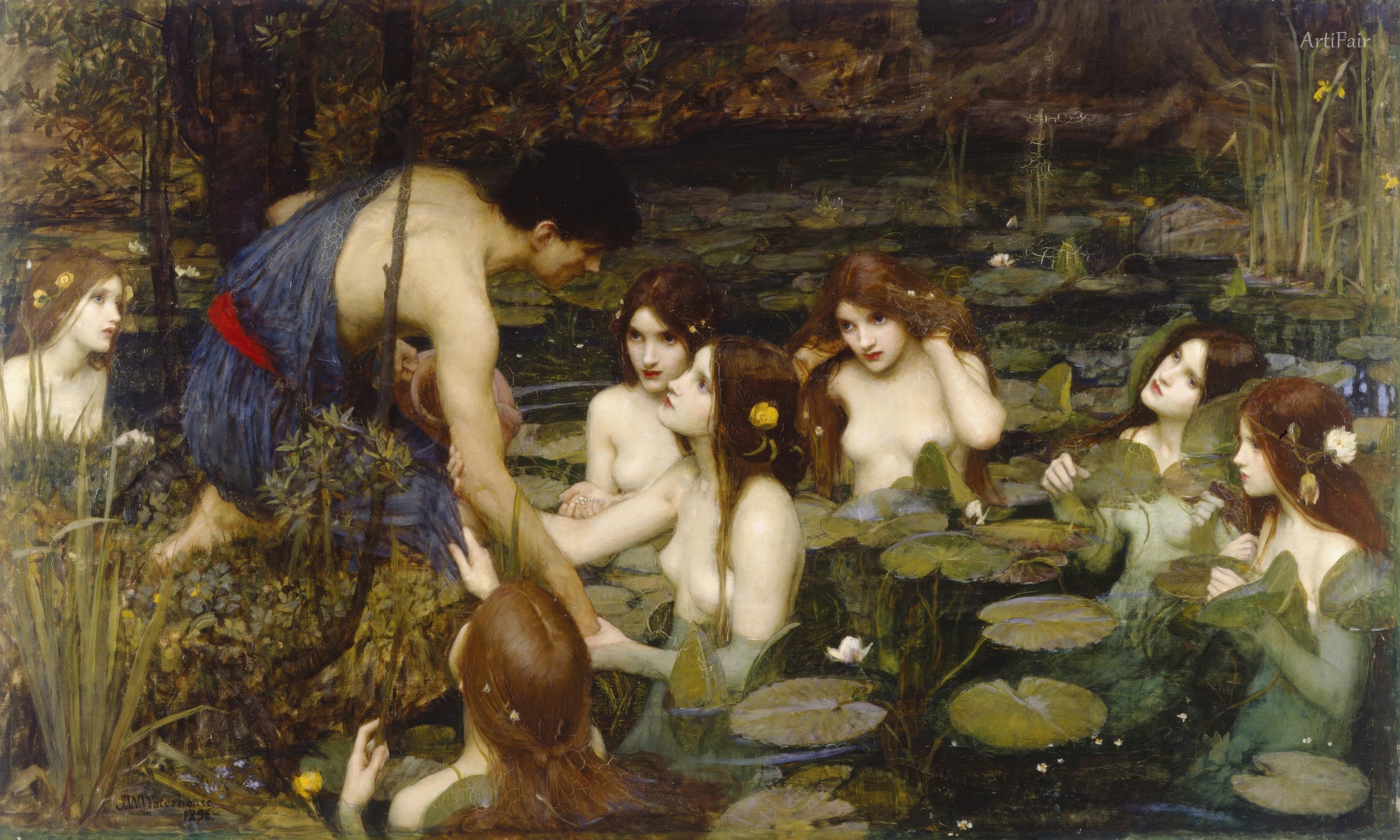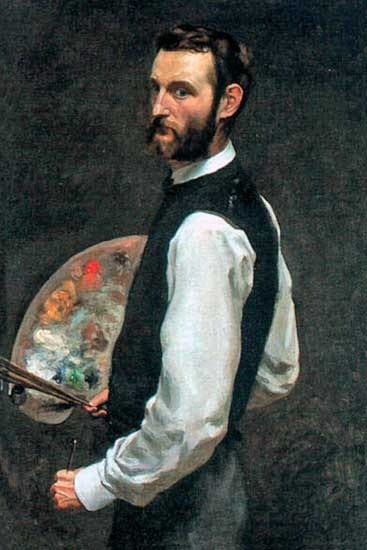

John William Waterhouse
GB
97
Artworks
1849 - 1917
Lifespan
Artist Biography
John William Waterhouse (baptized April 6, 1849 – February 10, 1917) was a distinguished English painter whose work straddled the late Victorian era and the dawn of the twentieth century. Renowned for his captivating depictions of women from classical mythology and Arthurian legend, he is often associated with both the Academic style and the later phase of the Pre-Raphaelite movement. Born in Rome to English painters William and Isabella Waterhouse, he was affectionately nicknamed 'Nino'. This early life in Italy profoundly influenced his later choice of subjects, frequently drawing from Roman mythology and classical settings. In 1854, the family returned to England, settling in South Kensington, London, conveniently near the newly established Victoria and Albert Museum. Immersed in an artistic environment from birth, Waterhouse was encouraged to draw, spending considerable time sketching artworks in the British Museum and the National Gallery, honing his skills. In 1871, he formally began his artistic education by enrolling in the Royal Academy of Art schools, initially intending to study sculpture.
It was not long before Waterhouse found his true calling in painting. By 1874, he had made the switch, marking his public debut as a painter at the Royal Academy's summer exhibition with the critically successful work, *Sleep and His Half-Brother Death*. His early works were deeply rooted in the classical Academic tradition, echoing the spirit of contemporaries like Sir Lawrence Alma-Tadema and Frederic Leighton. These paintings, often depicting scenes from ancient Greek and Roman life, were exhibited regularly and brought him increasing recognition within the London art scene. The success of pieces like *After the Dance* (1876), which was given a prime position at the Royal Academy exhibition, solidified his rising status. As his reputation grew, so did the scale of his ambitions and his canvases, moving towards larger and more dramatic compositions that showcased his rich, glowing colour palette.
The 1880s marked a significant evolution in Waterhouse's artistic focus as he began to embrace the subject matter and stylistic sensibilities of the Pre-Raphaelite Brotherhood. While he was never a member of the original group, he has been called "the modern Pre-Raphaelite" for his fusion of their ideals with his own distinct approach. He developed a profound interest in literary themes, drawing inspiration from the works of poets such as Alfred, Lord Tennyson, John Keats, and William Shakespeare. Central to his oeuvre became the figure of the woman, portrayed in various archetypes: the tragic heroine, the enchanting sorceress, or the powerful femme fatale. His most iconic works explore these figures with great emotional depth. He famously painted the tragic character of Ophelia three times (1889, 1894, 1910) and was captivated by Tennyson's *The Lady of Shalott*, a subject he also revisited in three major canvases (1888, 1894, 1915), with the 1888 version becoming one of the most famous paintings of the era. His technique uniquely combined the meticulous detail and literary narrative of the Pre-Raphaelites with a looser, more expressive brushwork reminiscent of Impressionism.
Waterhouse's career was marked by consistent professional success and accolades. He made several trips to Italy in the late 1870s and 1880s, which further enriched his classical repertoire. In 1883, he married Esther Kenworthy, an artist who exhibited her own flower paintings. His standing in the artistic establishment was secured when he was elected an associate of the Royal Academy in 1885, followed by his elevation to a full Royal Academician in 1895. For his diploma work, he submitted his 1888 painting of *Ophelia* as a temporary piece while he completed *A Mermaid* (1900). His reputation was further enhanced when the influential collector Sir Henry Tate purchased two of his major works, *Consulting the Oracle* (1884) and *The Lady of Shalott* (1888), for his national collection. Beyond his own practice, Waterhouse was dedicated to the artistic community, teaching at the St. John's Wood Art School and serving on the Royal Academy Council.
Waterhouse continued to paint prolifically throughout the 1890s and 1900s, remaining devoted to his mythological and literary themes. However, as the art world moved towards Modernism, his classical, romantic style began to be seen as outmoded. Despite this shift in taste, he remained a regular exhibitor at the Royal Academy. In his final decade, despite suffering from increasing frailty due to a long battle with cancer, his creative drive did not wane. He worked on a series based on the Persephone legend and produced late masterpieces like *Tristram and Isolde* (1916). He died on February 10, 1917, leaving his final painting, *The Enchanted Garden*, unfinished on his easel. While his work was largely overlooked for much of the 20th century, a major revival of interest began in the 1970s, culminating in a major retrospective at the Royal Academy of Art in 2009. Today, John William Waterhouse is celebrated as one of Britain's most beloved painters, his legacy secured by his timeless, evocative, and hauntingly beautiful portrayals of women from a world of myth and legend.